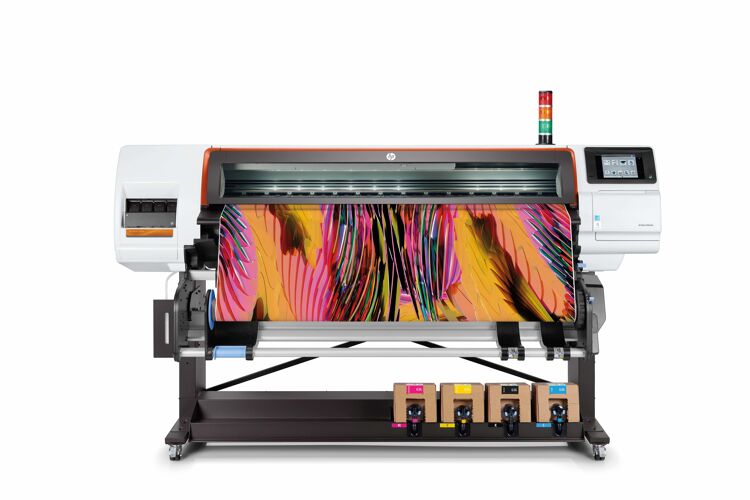HP targets growing textile markets with Stitch S Series

HP has launched its new HP Stitch S Series portfolio of digital textile printers in an effort to help its customers access work in expanding sectors of the wider textile print market.
The HP Stitch range comprises three models: the 64-inch HP Stitch S300 and S500, and the HP Stitch S1000 126-inch device. All machines in the portfolio feature what HP said is the first-ever built-in spectrophotometer, which it said enables fast and exact colour-matching.
The HP Stitch S300 has the first user-replaceable printhead, helping to reduce down-times and service costs, making it suitable for new-to-dye sublimation professionals, prototyping departments and growing print providers.
The HP Stitch S500 features a symmetrical 2xCMYK printhead configuration and Optical Media Advance Sensor, allowing for saturated and reliable one pass mode for true top speed - designed specifically for high production sites.
Meanwhile, the HP Stitch S1000 model offers the largest option of the trio and will make its debut at the 2019 FESPA Global Print Expo in Munich, Germany, from May 14-17.
Speaking to FESPA.com about the new launch, Phil Oakley, regional business manager for HP Large Format in the UK and Ireland, said the Stitch S Series will help customers push the limits of digital creativity in textile.
“As an industry leader in print, this launch signals our entry into textile printing for sportswear and fashion, interior décor and soft signage applications,” Oakley said.
“We’re bringing our in-depth knowledge of the print industry to the dye sublimation market with the HP Stitch S Series launch. We’re in constant conversation with our customers and it became clear that there are common needs for streamlined production, colour consistency and cost savings.”
To complement the launch, Oakley said that HP has also developed a new dye sublimation paper, designed especially for HP Stitch S Series. He said that this paper enables customers to achieve “excellent image quality and colour consistency”.
“This is achieved as the papers are designed and tested as a system with HP dye sublimation inks and the HP Stitch S Printer series,” Oakley said.
“All in all, the series can offer customers a portfolio of digital textile printers that deliver fast, precise colour-matching, alongside efficient, simplified processes.”
Santi Morera, head of the Graphics Solutions Business at HP, also said in a press statement: “Décor and fashion application trends, on demand production and personalisation are boosting digital print growth. We look forward to more digital print transformations being realised with the arrival of the new HP Stitch S series.”
FESPA Global Print Expo 2019 is Europe’s largest speciality print exhibition for screen and digital wide format print, textile printing and signage solutions. Visit HP at stand F30 in hall A5 at the Messe Munich between the 14-17 May 2019 and discover the available features. Please use promo code FESG902 to register for free.
Topics
Interested in joining our community?
Enquire today about joining your local FESPA Association or FESPA Direct
Recent news

The importance of ink for large format printers
Ink is crucial for large format inkjet printers, influencing substrate compatibility, productivity, and cost. Nessan Cleary discusses the three main types which include UV-curable ink, latex ink and eco-solvent ink. Each ink type has specific strengths and weaknesses, making printers choice dependent on budget and intended applications.

What are the benefits of Direct-To-Fabric printing?
Direct-to-fabric printing is gaining popularity for high-volume textile production, enabling on-demand, customized short runs. These printers offer ink flexibility, accommodating various fabric types like cotton and silk, though ink development focuses on faster turnaround by reducing pre- and post-processing. Compared to traditional methods, direct-to-fabric inkjet printing is a more sustainable option due to reduced water and chemical usage, and localized production.

What are the opportunities for large format providers regarding digital touch screens?
Digital touchscreens are becoming increasingly common, offering businesses opportunities to improve customer engagement and streamline operations. Nessan Cleary shares, while more expensive to implement than standard digital displays due to complex software and integration needs, touchscreens provide self-service options, multilingual support, and can reduce staffing costs in various settings like retail, transportation, and healthcare.
